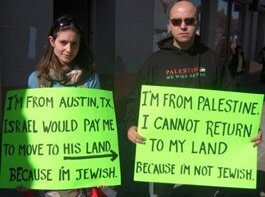By Irene Genndzier, Mondoweiss – 17 Aug 2015
http://mondoweiss.net/2015/08/beaches-aviv-gaza

Irene Gendzier
On July 25, 2015 The Washington Post carried an article by its Jerusalem correspondent, William Booth, on Israelis celebrating the one-year anniversary of Israel’s war on Gaza. Booth’s report was entitled, “A year after the Gaza war, good times are back on Tel Aviv’s beaches.” On July 26, 2015, Palestinian journalist Mohammad Omer, posted an article describing “The beach: Gaza’s one lifeline.”
No more than 44 miles apart, the beaches described by Booth and Omer are world apart, yet they are inseparably and perversely linked. The bond is war, the very war whose anniversary is the cause of celebration on the beach in Tel Aviv, much as its dire consequences account for Gazans viewing it as a lifeline. The very same war that Booth’s celebrants elect to turn away from, remains an inescapable reality in Gaza. Booth offers a single exception of a couple mourning their son killed in the same war. Otherwise, the Tel Aviv beachcombers want no talk of last summer’s war or its victims. The latter remain far removed from the “La La Land,” of Tel Aviv. In this scenario, there is no place for talk of responsibility, conscience or compassion towards those who are absent, the unknown and unnamed ‘others,” the victims of a history that has been erased.
Booth’s account introduces readers to recognizable individuals in Tel Aviv. There is the case of 26-year-old Tel Aviv beachcomber, Dan Cohen, who beseeches Booth, “Oh, man, don’t take us back to the war. Please. It’s a beautiful day.” Booth evidently complied with scenes of sun and fun, in which “happy dogs were running off their leashes. Guitar players gathered at sunset; surfers watched the waves; kayakers rode the breakwaters. All looked as if they ate nothing but salad; they were either young or athletic. The waiters were busy at a popular seaside bare called ‘La La Land.’” For these beach lovers, as Booth explained, “going to the beach is a summer ritual, a time for serious bronzing and endless paddleball-and for escape.”
There are the voices of the “swing dance instructor and DJ,” who tells Booth that “the point is, the harder it gets for Israelis, the more free we feel.” There is “Nerry Sternberg, 53,” who “was wacking a paddleball- matkot in Hebrew- with a female friend, who served in the army during the Gaza war. Sternberg said he was here last summer, doing the same thing. He confessed that when he heard the air-raid siren, he stayed on the beach.” Ruth Bar, “as coppery brown as a Medjool date, ensconced on her chaise, music playing, green sunglasses on,” reminds Booth that “this country has wars. We get used to it.”
Booth does not ignore the couple mourning the death of their son who was also a beach lover, “Israeli army officer Lt. Roy Peles, 21, [who was] killed by an antitank missile in the northern Gaza Strip one year ago.”
Against this background, Booth offers readers a brief reminder that,
“last summer’s war with Hamas killed more than 2, 100 Palestinians, including more than 500 children, four of whom were killed by two Israeli missiles on a beach like this one but a few dozens of miles south (a tragic error, the Israeli military concluded). Gaza was pounded by Israeli artillery, and tens of thousands of housing units were destroyed. Rebuilding has been slow, and the people of Gaza life among the ruins and memories.”
As for Israel, Booth adds, “72 people died, most of them soldiers killed in Gaza; six civilians were killed, including a 4-year-old boy. Hamas and other armed Palestinian factions fired 4,500 rockets and mortars at Israel. They did little damage, and most Israelis have quickly put last summer’s war behind them.”
In this account, there is no reference to the fate of Palestinians in Gaza, the collapse of the entire social, political, economic infrastructure and its meaning for survivors. Nor is there any reference to those veterans of the IDF who chose to break the silence about their complicity in the atrocities of a war that represents the most recent and brutal attempt to destroy Palestinian life in Gaza.
Instead, Booth reminds readers that they can find a sign written in Arabic, Hebrew and English, reading, “Go in peace,” near lifeguard station 11.
Six months earlier, the same journalist penned an article entitled, “War Punishes Gaza,” in which he described conditions in the Gaza strip with “scenes of misery as one of the few things in abundance in the battered coastal enclave.” Thousands of its residents were described as “living in caravans or tents, or huddling in their bombed-out apartments. All told, 100,000 people remain displaced.”
But for US readers of Booth’s latest article, as for others with little inclination to question mainstream accounts, the carnage of last summer’s war has receded into another unpleasant memory of the perpetually troublesome Middle East. Accounts of Gaza in mainstream US media serve primarily to reinforce the whitewashed image of Israel facing Palestinian terrorists that render all critics of the Israeli leadership as suspect. Forgotten in this haze, are the Israeli wars on Gaza that followed Israel’s withdrawal from Gaza, beginning with those in 2006, 2008-9, 20012 and the most recent, in the summer of 2014.
The conditions explained by Mohammad Omer, including why the beach in Gaza serves as “Gaza’s one lifeline” have no place in this self-serving scenario. Yet it is only in acknowledging his accounts and those of others who have experienced the impact of ‘Protective Edge’ on Palestinians, that readers can begin to break through the caricatured distortions of media coverage of the last Israeli invasion of Gaza.
Mohammad Omer’s report on July 26, focused on problems of electricity and water and how they contrived to make Gazans turn to the beach as an escape.
Ziara, a Gaza resident, explained that “the new electricity schedule of four hours on and 18 hours off has forced me out of the home and down to the beach…” As for water, Omer cites another Gazan who tells him, “we have no purified war; no piped-in water or electricity to even boil dirty sea water if that’s all we have left.” The result is that “Gaza is like a closed, hot, tin-can with no air to breathe — the beach is the only place where we can relieve the pressure.”
Writing from Rafah, Omer reports that “Gaza is currently suffering from daily electricity cuts as well as widespread water shortages,” that endanger the population of 1.8 million Gazans.
“The independent Commission for Human Rights said at a press conference that the responsibility for the power cuts falls, firstly, on Israel as the occupying power under the fourth Geneva Convention, and then on Palestinian officials, in both the West Bank and Gaza.
The occupation policies depriving Gaza of getting adequate and continuous fuel are blatant violations against international law,” it said.
The commission also called on all co-signatories of the fourth Geneva Convention to apply pressure on Israel to cease such policies and practices and commit, instead, to delivering at least basic services to civilians.”
On July 25, 2015, Israeli journalist Amira Hass, published an article entitled, “A year on, Gazans have no more tears to cry.” Hass described the condition of Gaza residents for whom, “death has simply become part of ‘normal’ daily calculations in the Gaza Strip, where the traumatic effect of last summer’s war is impossible to escape.” She reported that,
“during the war, the IDF bombed dozens of houses whose residents were still inside. In 70 cases documented by B’Tselem, [the Israeli human rights organization] 606 people were killed-about a quarter of all Palestinian fatalities. They included 93 children under 5; 129 children aged 5-14; 42 teens aged 14-18; 135 women; and 37 people aged over 60.”
At the present time, travel in and out of Gaza is restricted to foreigners, international aid workers, journalists and diplomats who can testify to how Gazans “are coping with the burden of loss and destruction from last summer’s war. Everyone else, including journalists from Israel and the West Bank, needs intermediaries.”
The above remarks provide contrasting images of Tel Aviv and Gaza in two articles, but they deserve to be extended as they frequently apply to coverage of Israel and Gaza, as well as the West Bank, where Israeli policies of dehumanization and destruction are a constant feature of occupation. Turning away from its consequences, such as the burning of an infant and family in the Palestinian village of Duma on the West Bank in early August, is not an example of detachment but complicity. Of other cases of humiliation, there is that reported in “Israel vs the Violin,” in which the music teacher at the Gaza wing of Palestine’s National Conservatory of Music,” is not permitted to enter Gaza to meet his students. Earlier examples involving Palestinians forced to play for Israeli forces, proved shocking at the time, though since unmentioned.
For US consumers of the media, the demand to know is imperative given Washington’s crucial role in subsidizing Israeli policies, including the occupation of the West Bank. In this context, knowing as opposed to turning away is a form of resistance against the injustice at the root of the tale of two beaches.
Irene Gendzier was a long time member of the Boston University faculty, having taught in the Departments of History, African Studies and Political Science. Her most recent book is Dying to Forget: Oil, Power, Palestine, and the Foundations of U.S. Policy in the Middle East, Columbia University Press, Nov. 2015; and she is also a member of the IOA Advisory Board.




















